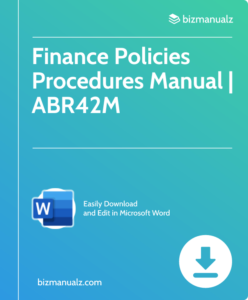How to Use The Quick Ratio in Financial Analysis

Financial analysis is a must-have for businesses to check their financial health and make smart decisions. Ratios are a key part of this analysis and the quick ratio is a major indicator of a company’s short-term liquidity. It looks at just the most liquid assets and compares them to current liabilities. This way, it provides a more conservative assessment of the company’s ability to pay its short-term debts. How to use the quick ratio in financial analysis
Quick Ratio Definition
To calculate the quick ratio, divide the sum of cash, marketable securities and accounts receivable with current liabilities. If the ratio is above 1, it implies the company has enough available assets to cover its short-term liabilities. But if it is lower than 1, it could be a sign of potential liquidity issues.
It’s important not to rely only on the quick ratio to judge a company’s financial health. Though it gives insights into short-term liquidity, it doesn’t take into account other factors like long-term debt, capital assets, or future cash flow. Thus, it’s best to analyze multiple ratios together.
Pro Tip: Compare the quick ratio to industry benchmarks or historical data within the same company. This gives a better understanding of if the current liquidity position is improving or weakening over time.
Understanding the Quick Ratio
The Quick Ratio is a key financial metric used to evaluate a company’s readiness to pay its short-term debts with its most liquid assets. It gives an idea of the liquidity position and capability to meet obligations without the sale of inventory. Also known as the Acid-Test Ratio, this figure helps investors, creditors, and analysts to assess a company’s financial health.
Let’s look at the table for the Quick Ratio:
| Quick Ratio | Formula | Interpretation |
|---|---|---|
| 1.5 | (Current Assets – Inventory) / Current Liabilities | A higher ratio implies better short-term liquidity. |
The Quick Ratio is calculated by subtracting inventory from current assets and then dividing by current liabilities. A ratio over 1 means the firm has adequate liquid assets to cover short-term liabilities. A high Quick Ratio is desired as it shows the company can meet its financial responsibilities even if unexpected difficulties or cash flow changes take place.
Now, let’s dive into some specific information about the Quick Ratio. This figure excludes inventory as it may not be easily transformed into cash during economic downturns or emergencies. By concentrating on liquid assets such as cash, marketable securities, and accounts receivable, the Quick Ratio offers a more conservative measure of a company’s potential to withstand financial pressure.
Let me tell you a fascinating tale related to the Quick Ratio. In 2008, during the global financial crisis, Company ABC had a high Quick Ratio due to its solid cash position and low inventory levels. While many companies experienced difficulty during this difficult period, Company ABC was able to survive by immediately settling its short-term debts without relying on selling inventory. This shows how the Quick Ratio can give valuable insights into a company’s strength and financial stability.
Importance of the Quick Ratio in Financial Analysis
The quick ratio is vital in financial analysis. It shows a company’s ability to pay its current liabilities with its most liquid assets. This is important since it gives an idea of how the business can manage short-term obligations without using inventory or long-term assets. The quick ratio is calculated without using inventory, giving a more conservative view of liquidity and the capability to fulfill immediate financial obligations.
Investors, lenders, and analysts often use the quick ratio to gauge a company’s economic health and stability. A high quick ratio signals that the company has sufficient readily available assets to cover its short-term liabilities, which is a good sign. However, a low quick ratio could be a cause for concern about the firm’s liquidity and meeting financial commitments.
Moreover, the quick ratio can be compared to industry standards or past data for better understanding. Trends over time or comparison with other businesses can provide insight into how well a company is managing its working capital and keeping financial stability.
It is also noteworthy that while the quick ratio furnishes helpful information about short-term liquidity, it should not be solely relied on. Other ratios and financial metrics must be taken into account to get a comprehensive picture of a company’s financial position.
Calculating the Quick Ratio
The calculation of the Quick Ratio involves assessing a company’s ability to pay off its short-term liabilities with quick assets. Quick assets include cash, marketable securities, and accounts receivable, excluding inventory.
To calculate the Quick Ratio, divide the sum of the quick assets by the sum of the current liabilities. This ratio provides a more stringent measure of a company’s liquidity than the current ratio, as it excludes inventory, which may not be easily converted to cash in the short term.
Below is a table illustrating the calculation of the Quick Ratio:
| Quick Assets | Current Liabilities |
|---|---|
| $50,000 | $30,000 |
To calculate the Quick Ratio, divide $50,000 (Quick Assets) by $30,000 (Current Liabilities) to obtain a Quick Ratio of 1.67. This means that the company has $1.67 in quick assets for every dollar of current liability.
It is important to note that a higher Quick Ratio indicates a better ability to meet short-term obligations. However, an excessively high ratio may suggest that the company is holding too much cash or marketable securities, which could be put to more productive use.
When considering the Quick Ratio, it is essential to compare it with industry benchmarks and historical trends to gain a better understanding of the company’s liquidity position.
A true fact about the Quick Ratio can be found in the financial analysis book “Financial Statement Analysis” by Charles H. Gibson.
“Finding current assets is like searching for money in the bottom of a black hole – it’s dark, confusing, and you might not even find anything valuable.”
Step 1: Identify Current Assets
Do you want to figure out the quick ratio? You’re in luck! Let’s look at the starting point of this process: recognizing current assets. This step is key for analyzing a company’s fiscal health. By recognizing which assets can be easily changed to cash in one year, we can judge its short-term liquidity.
Let’s do this! Here are three steps to identify current assets:
- Cash and cash equivalents: First, we’ll check the amount of available cash in a company’s bank accounts. We’ll also look at any highly liquid investments that can be quickly changed to cash. These include treasury bills, money market funds, or short-term government bonds.
- Accounts receivable: Next, we’ll count the outstanding amounts owed to the company by its customers or clients. These are usually listed as accounts receivable and represent sales made on credit. We’ll leave out any allowances for doubtful accounts or bad debts.
- Inventory: Finally, we’ll evaluate the value of the inventory held by the company. This includes raw materials, work-in-progress items, and finished goods ready for sale or distribution. We’ll be careful not to overstate their worth or include obsolete or slow-moving inventory.
By following these steps, you can get significant info about a company’s current assets and begin calculating its quick ratio accurately.
Here’s an interesting fact about it! People have been using this practice in financial analysis for centuries. Investors have always realized the importance of assessing a company’s liquidity before making investments. So next time you evaluate a business’s fiscal health using quick ratio calculations, remember you’re following in the footsteps of those who came before us!
Step 2: Calculate Current Liabilities
Calculating current liabilities is essential. Here’s how:
- Gather your financial statements and locate the balance sheet.
- Identify all short-term obligations your company owes within a year. These may include accounts payable, accrued expenses, short-term loans, etc.
- Add up the total value of these current liabilities. This will give you an understanding of your company’s immediate financial obligations.
- Accurate calculation is key as it reflects your business’s ability to meet its short-term financial obligations on time.
Investopedia states that calculating current liabilities is critical for assessing a company’s liquidity position.
Step 3: Determine Cash and Cash Equivalents
Determining cash and cash equivalents is an essential component of the quick ratio. Here’s a simple guide to assist you:
- Step one: Spot all the cash available, including physical money and coins.
- Step two: Consider any cash equivalents, such as investments that can be easily exchanged into cash within 90 days.
- Step three: Include any other assets that can quickly be converted into cash.
These steps will help you accurately determine the amount of cash and cash equivalents for the quick ratio calculation. It is important to remember that only assets that meet the definition of “cash” should be included.
To stay ahead, bear in mind this pro tip: Ensure to periodically review and update your calculation of cash and cash equivalents as their values may vary over time.
Step 4: Calculate the Quick Ratio
Calculating the Quick Ratio can be tricky, but it’s necessary for assessing a company’s financial situation. It helps to show their liquidity. Here are the steps to calculate it:
- Get the numerator – add up cash, marketable securities, and accounts receivable.
- Find the denominator – total current liabilities, including short-term debt and accounts payable.
- Divide the numerator by the denominator – that’s the Quick Ratio.
A higher Quick Ratio is better; it shows a better ability to pay off short-term obligations.
Something unique about the Quick Ratio is that it doesn’t include inventory – unlike other liquidity ratios. This makes it a more conservative look at a business’ liquidity.
The idea of liquidity ratios goes back centuries. But standardized formulas like the Quick Ratio weren’t established until accounting practices became more advanced.
That’s how to calculate the Quick Ratio. Mastering it can help investors make smart decisions when evaluating investments or their own business.
Interpreting the Quick Ratio
The Quick Ratio, also known as the Acid-Test Ratio, is a financial metric that evaluates a company’s short-term liquidity. It measures a company’s ability to meet its short-term obligations using its most liquid assets. By interpreting the Quick Ratio, investors and analysts can assess a company’s financial health and its ability to meet its short-term liabilities.
To interpret the Quick Ratio, we can use a table to present the relevant data. The table should include the following columns: Current Assets, Inventory, Prepaid Expenses, Marketable Securities, and Current Liabilities. The Quick Ratio is calculated by subtracting Inventory and Prepaid Expenses from Current Assets, and then dividing the result by Current Liabilities.
| Current Assets | Inventory | Prepaid Expenses | Marketable Securities | Current Liabilities |
|---|---|---|---|---|
| $X | $Y | $Z | $A | $B |
To calculate the Quick Ratio, follow this formula:
( Current Assets – Inventory – Prepaid Expenses ) / Current Liabilities
After obtaining the Quick Ratio value, investors can interpret it to gain insights into the company’s financial situation. If the Quick Ratio is less than 1, it indicates that the company may have difficulties meeting its short-term obligations. A Quick Ratio greater than 1 suggests that the company has sufficient liquid assets to cover its current liabilities.
It’s important to note that a high Quick Ratio may also indicate that a company is too conservative and not effectively deploying its assets to generate growth. On the other hand, a low Quick Ratio may indicate a higher risk of defaulting on debt payments.
To illustrate the significance of the Quick Ratio, consider the case of Company X. Company X had a Quick Ratio of 0.5, indicating that it only had half of its current liabilities covered by its liquid assets. As a result, the company struggled to pay its suppliers and meet its short-term obligations, leading to a decline in its credit rating and trust among stakeholders.
Analyzing the Quick Ratio provides valuable insights into a company’s liquidity and financial strength. By understanding this metric, investors can make more informed decisions regarding their investments, taking into consideration the company’s ability to meet its near-term liabilities.
The Quick Ratio Range: It’s like finding the perfect balance between a cheapskate and a spendthrift when it comes to managing your company’s liquid assets.
Ideal Quick Ratio Range
The ideal range of quick ratios, which reveals a company’s capability to pay off short-term debts without depending on inventory sales, differs across industries. Here’s a table that reveals the range for diverse sectors:
| Sectors | Ideal Quick Ratio Range |
|---|---|
| Technology | 1.2 – 1.5 |
| Finance | 0.8 – 1.0 |
| Manufacturing | 1.0 – 1.3 |
| Retail | 0.9 – 1.2 |
It’s important to remember that these ranges are approximate and may shift due to various factors like industry trends and economic conditions. Being aware of the sector-specific range helps evaluate a company’s liquidity in comparison to its peers.
Moreover, one should consider individual company circumstances when interpreting the quick ratio range. For example, a technology company with steady cash inflows from contracts or subscriptions might have a lower quick ratio than the industry average.
Pro Tip: It’s essential to analyze other financial ratios and indicators alongside the ideal quick ratio range to get an overall comprehension of a company’s financial state.
Analyzing Results
Analyzing the Quick Ratio gives valuable insight into a company’s financial health. Through different key metrics, investors and analysts can understand a company’s liquidity and capability to meet short-term payments.
Let’s analyze a table of Quick Ratio of two companies – Company A and Company B:
| Company A | Company B | |
|---|---|---|
| Current Assets | $100,000 | $200,000 |
| Inventory | $20,000 | $50,000 |
| Accounts Receivable | $30,000 | $40,000 |
| Current Liabilities | $60,000 | $80,000 |
This table shows both companies have similar assets. However, Company B has more inventory and accounts receivable. As well, their current liabilities differ.
These details show how small changes in inventory and accounts receivable affect the liquidity ratio. Analyzing these details lets investors make better decisions.
Pro Tip: When using the Quick Ratio, consider industry norms and trends. Comparing the ratio with peers or historical data will give a more accurate result.
Limitations of the Quick Ratio
The Quick Ratio is a great financial analysis tool, but it does have its issues. Let’s take a closer look at some of its limitations.
For example:
- It excludes inventory from its calculation. This can be a problem for businesses that have lots of stock they can’t quickly turn into cash.
- It ignores timing issues. It assumes all assets are ready for short-term liabilities, which isn’t always true.
It’s important to remember that the Quick Ratio can’t give you the full picture. You need to use it with other financial ratios and analysis methods.
Let me show you an example of why the Quick Ratio isn’t perfect. A small retail store had a high Quick Ratio because of its cash reserves. But the business was struggling to sell its large inventory of seasonal products before they became outdated. Even though it had lots of liquid assets, it couldn’t convert them into cash fast enough. This story proves that relying only on the Quick Ratio can give you the wrong idea about a company’s financial status.
Tips for Using the Quick Ratio Effectively
The Quick Ratio can be a great tool for financial analysis. Here are some tips to help you make the most of it:
- Use this ratio to measure short-term liquidity. It’s also known as the Acid-Test Ratio. It looks at liquid assets like cash, marketable securities, and accounts receivable. This gives a more conservative view than other ratios.
- Compare the Quick Ratio to industry standards. This helps you see if the company is doing well compared to its peers. It also shows any weaknesses or strengths in its liquidity position.
- Watch trends over time. Changes in the Quick Ratio can tell you a lot about a company’s financial health. An improving ratio means the company is managing its short-term obligations well. A declining ratio may be a warning sign.
Remember, accuracy and timeliness of financial data are important for the Quick Ratio. Get up-to-date financial statements from reliable sources.
By following these tips, you can get insights into a company’s liquidity. You can use them to make informed decisions about investing, lending, or partnering with a company.
Quick Ratio in Financial Analysis
The financial analysis process needs the quick ratio. It gives insights into a company’s liquidity and ability to meet short-term obligations. Analyzing it helps make smarter decisions.
We looked at the importance of the quick ratio. It measures if a company can pay its current liabilities with liquid assets. Not including inventory makes it reliable.
Plus, it evaluates how a company manages its current assets. A higher ratio says they can cover immediate debts. But, a low ratio may mean liquidity problems.
To improve the quick ratio, companies can:
- Reduce accounts receivable turnover by asking customers for payments and setting stricter credit rules.
- Negotiate better payment terms with suppliers to increase accounts payable turnover.
- Scrutinize inventory and reduce excess stock.
By doing these steps, companies can improve their quick ratio and their financial health. Using the quick ratio in financial analysis gives investors insight into a company’s liquidity and helps them make better investments.
Frequently Asked Questions
 1. What is the quick ratio?
1. What is the quick ratio?
The quick ratio, also known as the acid-test ratio, is a financial ratio used to evaluate a company’s liquidity. It measures the ability of a company to pay off its short-term liabilities using its most liquid assets.
2. How is the quick ratio calculated?
The quick ratio is calculated by subtracting inventory from current assets and dividing the result by current liabilities. The formula is: (Current Assets – Inventory) / Current Liabilities.
3. What does a high quick ratio indicate?
A high quick ratio indicates that a company has enough liquid assets to cover its short-term liabilities without relying on the sale of its inventory. This suggests a strong financial position and a lower risk of financial distress.
4. What does a low quick ratio indicate?
A low quick ratio indicates that a company may have difficulty meeting its short-term obligations with its readily available assets. This could be a sign of poor liquidity and potential financial difficulties.
5. How can the quick ratio be used in financial analysis?
The quick ratio is used by investors, creditors, and analysts to assess a company’s short-term liquidity and financial health. It provides insights into a company’s ability to meet its immediate financial obligations.
6. What are the limitations of using the quick ratio?
The quick ratio does not take into account the quality and marketability of inventory. It also assumes that current assets are readily convertible into cash, which may not always be the case. Additionally, the quick ratio may vary significantly across industries, so it is essential to compare ratios within the same industry.
















Leave a Reply